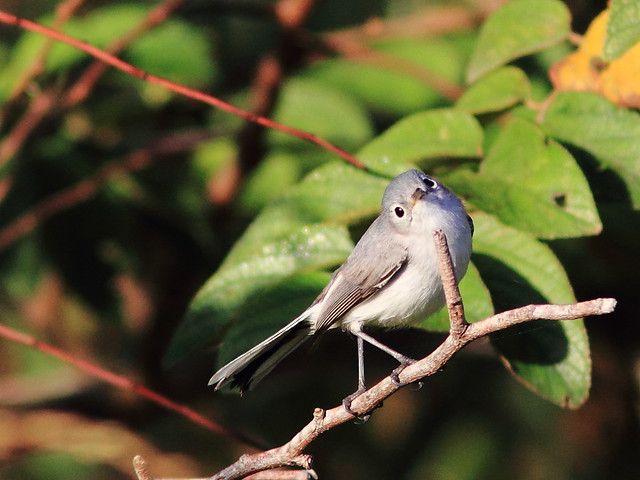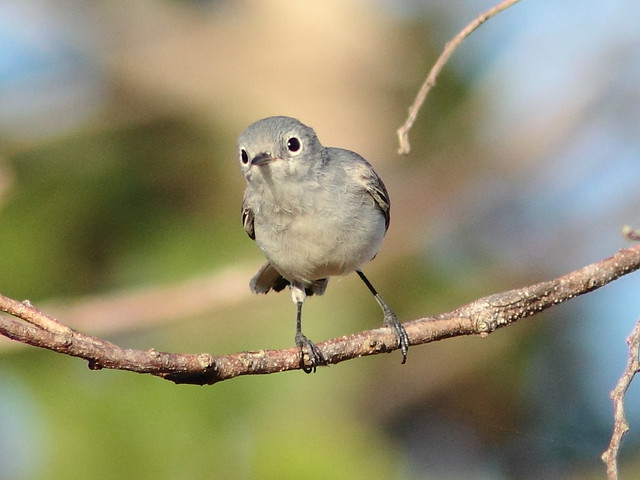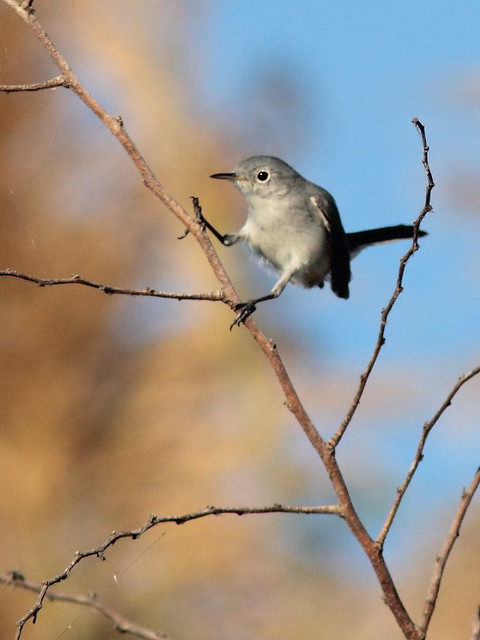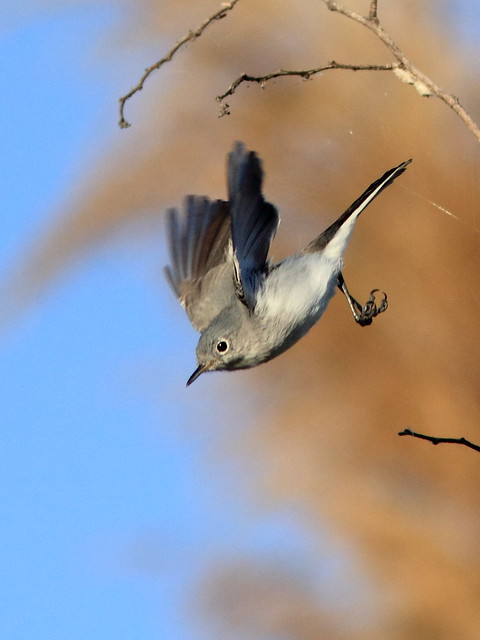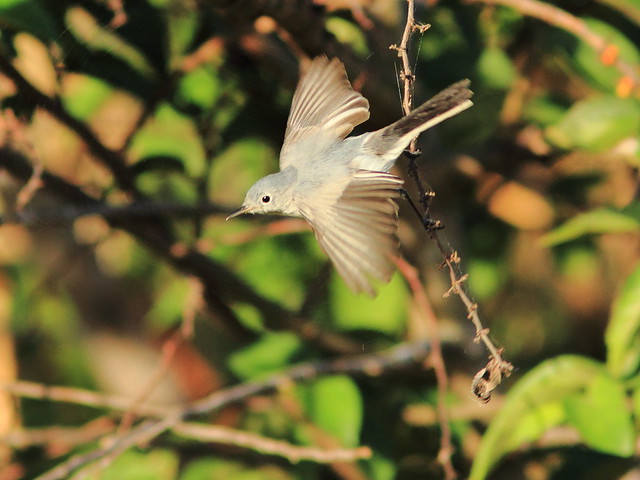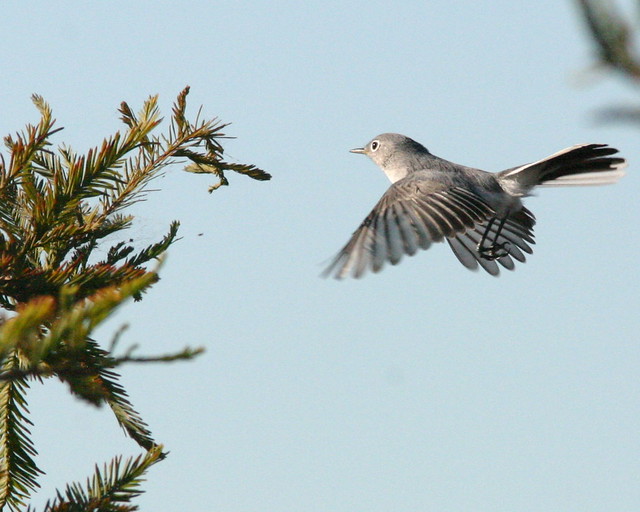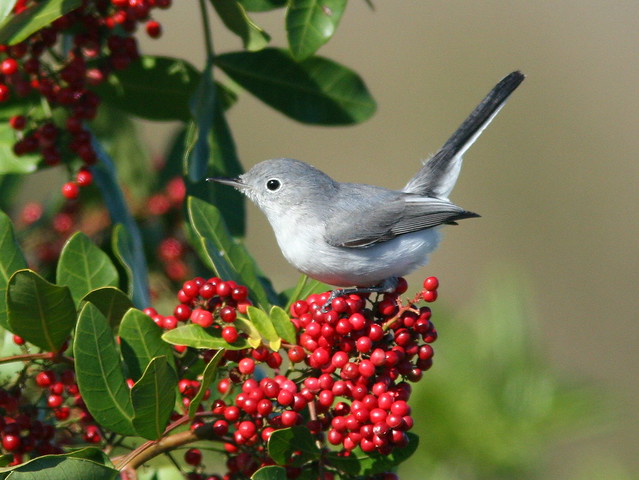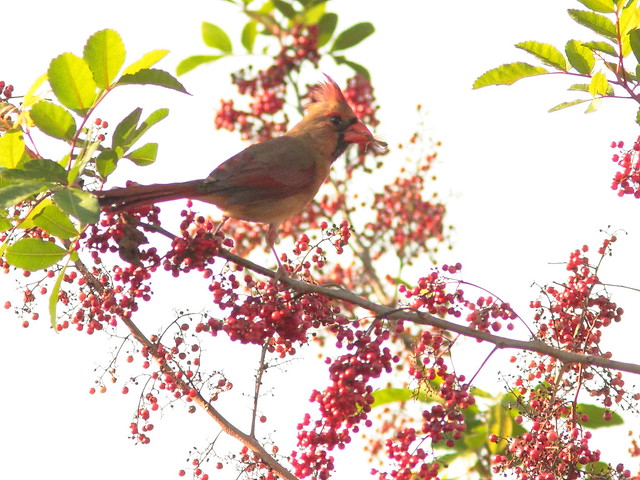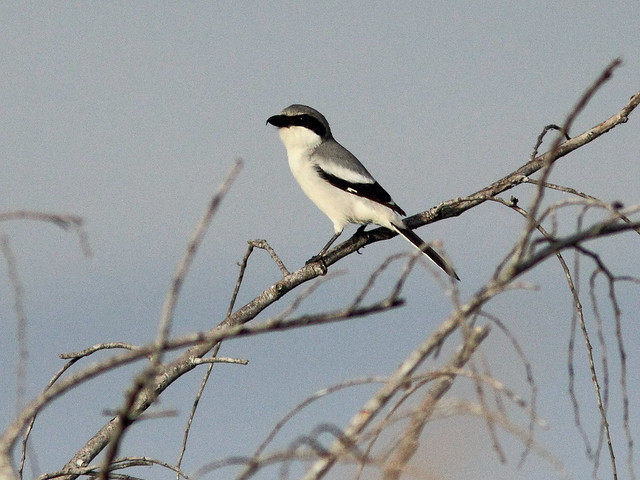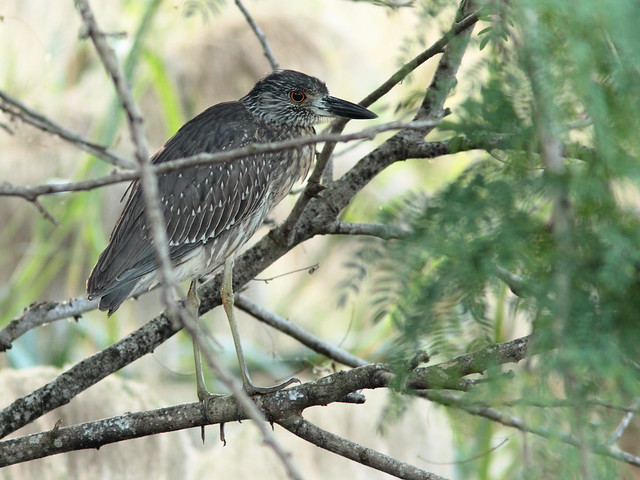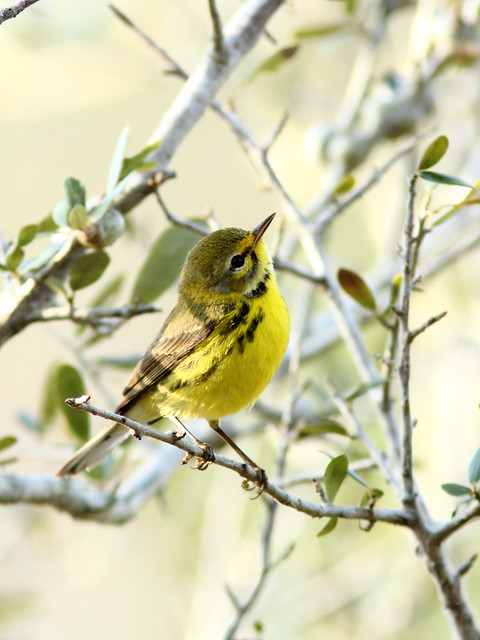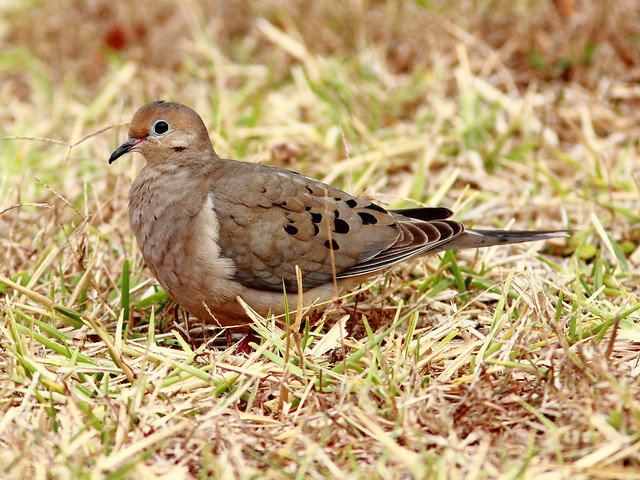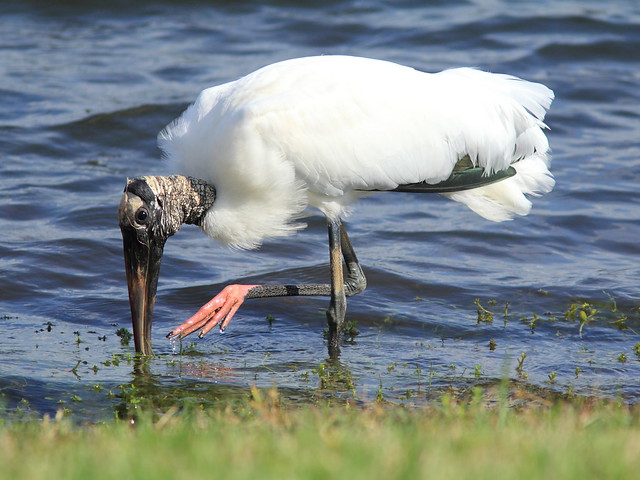Posted by: Ken @ 1:42 pm
This week we have spent a lot of time watching the local Bald Eagle nest. A 19 day old eaglet finally peeked over the rim on February 2.
Birding in mid-winter here in South Florida, we face some distractions. Small birds have so many places to hide, as most of our trees are evergreen. Even the deciduous trees such as maples not only hang on to their old leaves, but new leaves start growing in January. Cypress trees gracefully turn from green to yellow to golden and brown, perhaps going “bald” for part of a month before putting out new greenery.
Then there is the wind. On a still morning, it is easy to discern the tremble of leaf or twig, signaling the presence of a reclusive vireo or warbler. As the sea breeze builds, it scrambles the input to the rods in our corneas that normally alert us so efficiently to the slightest peripheral movement. Bazillions of fluttering butterflies vie for our attention.
Certain “non-target” species can also be distracting when I’m hoping to see Orange-crowned Warblers and Black-whiskered Vireos. Noisy Gray Catbirds and tail-wagging Palm Warblers abound all winter, and mockingbirds rattle around in the bushes. The antics of a flock of Blue-gray Gnatcatchers can keep you busy trying to separate them from warblers. Of course, just as is the case with chickadees up north, the gnatcatchers can keep very interesting company, so it is best to look at each one to rule out the 1% that is something more “interesting.”
Note that I avoided the harsh term of “trash birds,” sometimes used in an offhand manner by birders when they only see common species. I have written before about finding “Beauty in the Commonplace” as well as in some real “Trash Birds,” notably the exotic Sacred Ibis and the Purple Swamphen, both of which have been deemed a threat to native avifauna and have been subjects of eradication campaigns (dismally unsuccessful in the case of the swamphen).
One recent morning when a small flock of Blue-gray Gnatcatchers flew into the Trema tree where I was hoping to see something more “unusual.” I realized that I rarely get very good images of them. I don’t know how to make them stand still, and these birds were very active. Yet, despite their perpetual motion, they generally stayed in sight. The light was perfect. I focused my full attention on these little sprites, even ignoring the calls of nearby towhees and a White-eyed Vireo, and took over 50 photos. My trouble now is that I cannot bear discarding most of my shots. So I hope you can put up with an overdose of gnatcatchers.
This one stared at me quizzically…
…and came in for a better look.
Another climbed up a twig…
…and then treated me to a high dive.
I was delighted to catch a few flight shots, usually quite by accident.
This was my favorite flight shot, taken a couple of years back.
Two years ago, a gnatcatcher landed momentarily on a clump of invasive exotic Brazilian Peppers, providing me with my all-time luckiest image.
Well, I did finally break away from the gnatcatchers, or more correctly, they moved on as is their habit, and I started paying attention to my surroundings. This female Northern Cardinal gave me a red-on-red experience.
A Loggerhead Shrike called from a high perch.
At the site of our local rookery, an immature Yellow-crowned Night-Heron (most easily distinguished from the Black-crowned by its short and plump bill) had returned along with a more elusive adult,
A bright male Prairie Warbler hid in the berries at nearby Chapel Trail Nature Preserve, …
…and then came out into the open.
Back at home, a Mourning Dove rested on a neighbor’s lawn…
…and a Wood Stork showed off its bubble-gum pink feet at the edge of our back yard.














